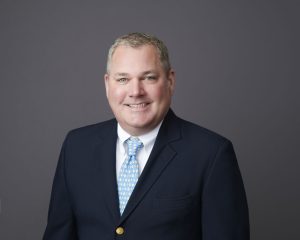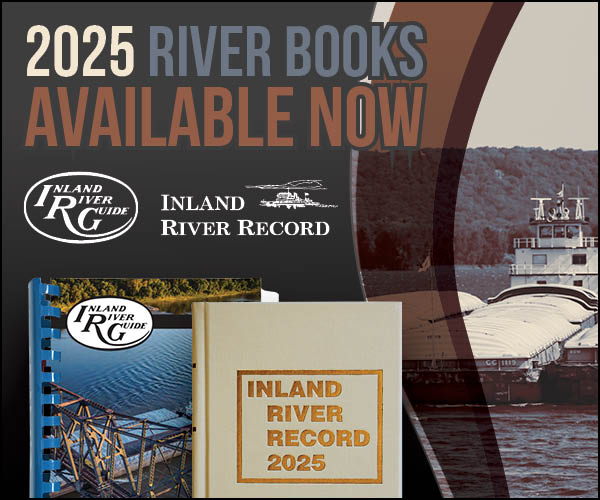Rohde Reflects On History, Importance of NESP

Paul Rohde, vice president-Midwest area for The Waterways Council Inc., has devoted an entire career to promoting the inland waterways. He has been involved in the Navigation and Sustainability Program (NESP) since its inception and has followed it through many political ups and downs. NESP aimed to improve both navigation and the ecosystem of the Upper Mississippi River system through a combination of infrastructure upgrades and environmental restoration projects.
The Waterways Journal: Can you tell us about how the effort to get NESP in place galvanized the entire waterways community?
Paul Rohde: A coalition of stakeholders was established in a regional waterways association created in the early 1990s, but the interest in more efficient barge transportation, particularly in agriculture circles, predates that by many more years. The Midwest Area Regional Coalition (MARC 2000) was founded by carriers and shippers as a non-governmental organization (NGO) to track and interact with the Corps’ study on the need for new locks on the Upper Mississippi Basin. It was established to provide technical input to the Corps on navigation issues, galvanize stakeholder support and turn them out at the Corps public meetings that occurred during the study, reach out to the media on why river transportation was a big deal and galvanize the Congressional delegation across the Upper Miss basin.
We became the lead NGO advocating for the seven locks identified in that Corps study.
WJ: How were you personally involved?
PR: When I arrived, we had a very active regional coalition of stakeholders, particularly agriculture-related interests. The carriers and other shippers were engaged. We continued to build a solid grassroots organization, primarily in the five Upper Basin states.
I realized we needed an increased presence from the building trades that would be recapitalizing the next generation of river transportation infrastructure. That would help us on both the political and media fronts, so I set out to increase our coalition by adding organized labor, contractors and other construction interests. We changed the narrative of 1,200-foot locks benefitting only the carrier and shipper community to focusing on the economic benefits to the region and nation. We stressed the jobs that would be created from the construction, not just of the locks, but of other river- and landside industries that would benefit from lock modernization.
The diversity of our coalition helped immensely in our Congressional outreach. It helped expand the view from Capitol Hill of “beneficiaries” to waterways transportation.
WJ: NESP went unfunded for seven consecutive fiscal years. How frustrating was that? What did WCI do?
PR: We achieved authorization in 2007 and then ran into the buzzsaw of the 2008 economic crisis, then-Speaker [John] Boehner’s shutdown of Congress’ power of the purse (earmarks) in 2010. A single project, Olmsted Locks and Dam, took up 90 percent of construction dollars (and Inland Waterways Trust Fund dollars), with little end in sight. There wasn’t much of a window in the 20-teens for NESP.
It was extremely frustrating, since we’d worked so hard to get that authorization, after a study period that took twice as long as planned. We hit the Hill for two years after the 2005 Chief’s Report, advocating NESP’s authorization, and finally achieved it in WRDA 2007, amid a very crowded field of projects. The backup of projects, and the price tag, prompted President Bush to veto it. It took a veto override to pass WRDA 2007.
Leading up to WRDA 2007, we had to wage an aggressive campaign to fight at least two amendment attempts to stall the lock construction, pending “more studies.” Our coalition members wore out a lot of shoe leather!
MARC 2000 and WCI merged in 2007, and we looked at how we could effect change, given the lack of funding for design work from the administration, and the self-imposed parameters of Congress not directing appropriations to projects.
First, we needed more capital coming from IWTF. WCI led the effort to lobby Congress for a 45 percent increase in the diesel tax as a means to finish Olmsted and other projects already under construction.
Second, we needed to educate Congress on the many other beneficiaries of the lock and dam infrastructure. Congress understood, and enacted cost-share changes, first to individual projects, and eventually to a 75/25 split for IWTF projects.
We continued to stay in communication with Congressional offices on the importance of NESP, the opportunities it presented to the region and nation. We also continued outreach to the administration and Corps to express stakeholders’ continued wide support of NESP during its ‘dormant’ years.
WCI also continued our outreach to other NGOs, particularly the conservation crowd. They had a lot to gain–or lose–from the ecosystem restoration component’s success. And we developed working relationships with credible conservation organizations that recognized the benefits of working together as a broad coalition.
There were still NGOs purporting to carry the environmental banner that continued painting the industry—incorrectly and irresponsibly—as a bogeyman in the river narrative. Maybe that works for mindless and emotional fundraising, but it doesn’t achieve any actual policy goals to help the river’s ecosystem, or for that matter the entire ecosystem, since barge transportation has the lowest carbon footprint, by far.
There’s still a long way to go. Persistent challenges in funding and project execution remain unresolved. Many of the tools available to the Corps to alleviate some of the associated risks that are most likely to increase costs need to be addressed. Continuing contracts and innovative acquisition strategies currently utilized by other federal agencies face bureaucratic hurdles in the Corps. WCI will continue to advocate for the tools, reforms and resources needed to get projects operational and return benefits to the economy and environment.
WJ: Is NESP in danger of once again losing its funding? Where does it stand today?
PR: Funding for NESP is never a given! Administration changes make headlines. The reality is that, regardless of who sleeps in the White House, the GS-15s at the Office of Management and Budget—career employees who don’t have to answer to an election or constituents—make huge, consequential decisions on the future of the inland waterways and face no repercussions. Unfortunately, OMB has shown it doesn’t support inland waterways construction and hasn’t funded even operation and maintenance at levels necessary to keep this aging system reliable and efficient. We realized that the strategic value of the inland waterway system can never be assumed. That’s why WCI was created.
Zero funding in administrations’ annual budget requests persist—jeopardizing the ability to keep critical projects on schedule and within budget. Although Congress has stepped in to bridge the gap through increased appropriations in the annual Energy and Water Development appropriations bill, the effectiveness of this support has been undermined by untimely continuing resolutions, both short-term and long-term.
This presents a danger of losing funding in two ways. First, any short-term continuing resolution for FY26 would be, today, based on how much is in the administration’s budget. That’s zero.
Second, if there’s another full-year continuing resolution like we saw in FY25, NESP could be set back many years. The FY25 CR resulted in the inland construction program receiving half of the funding needed in fiscal year 2025. (Both House and Senate bills included full funding in their base bills.)
For long-term success, we need to continue outreach to Congress for appropriations. For multiple years now, we’ve achieved support from various members of Congress in the form of Community Project Funding (House) and Congressionally Directed Spending (Senate).
This has been the path to getting NESP started. It was FY22 appropriations–not IIJA as many believe–that actually got the construction start green-light. And NESP has had the most legislators requesting its funding in the Energy and Water Development Subcommittee for multiple years now.
But it takes a lot of in-the-weeds work to make that happen. A lot of outreach to Congressional offices once their appropriations process opens up. And it builds on the relationship-building that’s ongoing with these Congressional offices, so they know who you are, what your policy interests are and what solutions you bring to the table when it’s time for project funding or authorization.
WJ: Do local communities that benefit from NESP project help advocate for it? Does that make a difference?
PR: Now with the advent of Community Project Funding (House) and Congressionally Directed Spending (Senate), Congress pointing to specific projects for funding, local input is more essential than ever. Many members of the House of Representatives require a resident in their district to be a sponsor of those spending requests. Having a mayor be that person to stand up and request the program’s funding is extremely helpful! More voices can only help.
WJ: With all the new attention to shipbuilding and reviving the blue-water merchant marine, is NESP in danger of getting lost in the shuffle?
PR: My initial response harkens back to the old aphorism, “a rising tide lifts all boats.” Those programs you mention can help revitalize inland shipping, and they don’t compete for IWTF dollars or federal dollars in the Energy & Water Appropriations bills.
NESP, and all lock and dam projects, are facing cost overruns and completion delays, for a variety of reasons. But we can’t walk away from their construction. There’s too much at stake. Waterways transportation is too vital to the nation.


